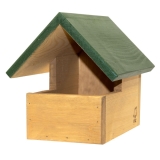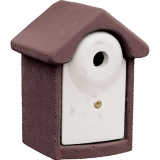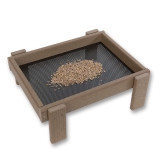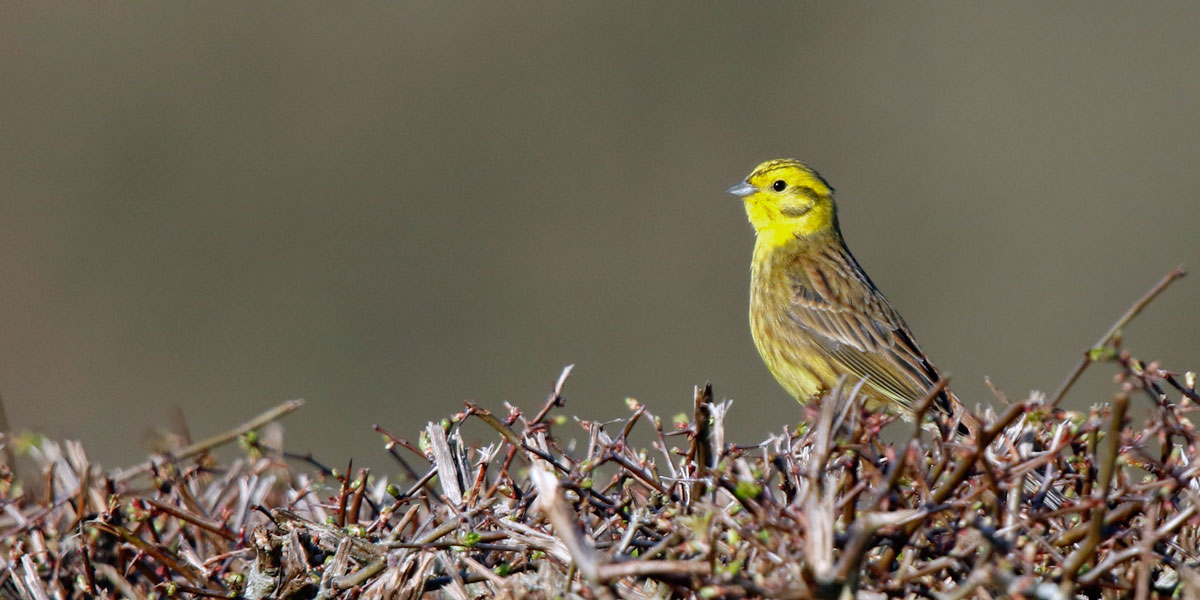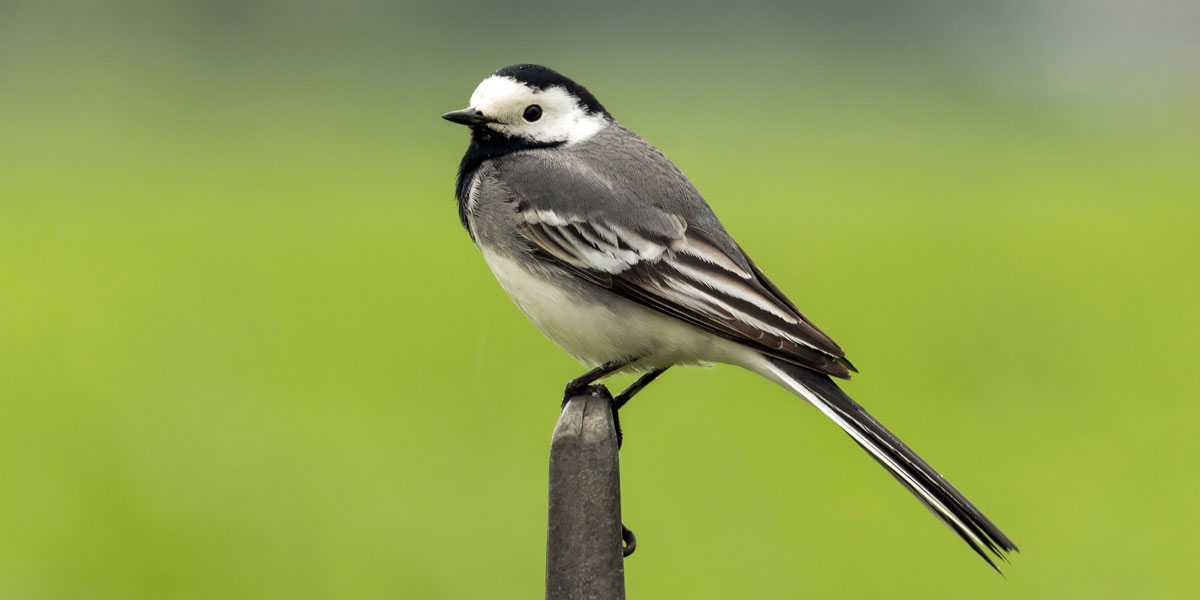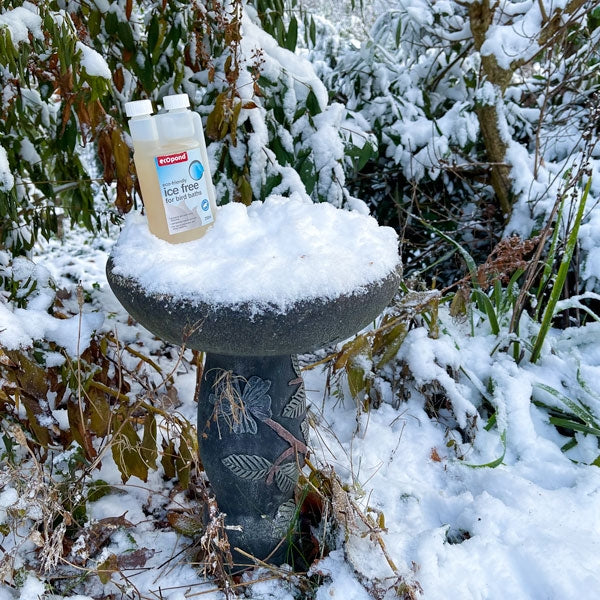Explore Our Garden Wildlife Blog
Browse or search by Category or Keyword below, alternatively click on any Tag to see related articles.
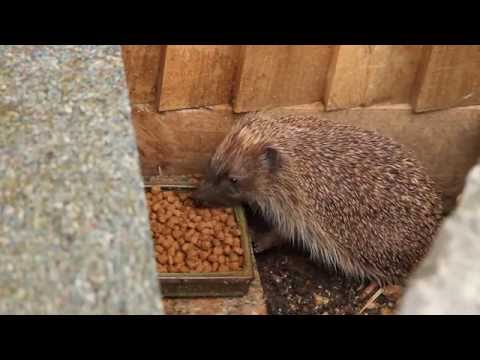

Section:
Guest Wildlife BloggersHolt Blackbird Tracking with BTO
By British Trust for Ornithology
17th April 2017
Last Updated: 6th April 2020
Are non-garden habitats limiting for urban birds?
Background
The Blackbird is a species of woodland and woodland edge which has adapted well to the urban environment, but has undergone an overall decline since the 1970s. Numbers began to recover in the mid-1990s but have since levelled off again in most areas (Fig 1).
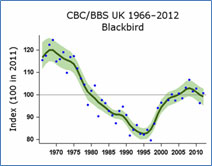
The latest BTO/JNCC/RSPB Breeding Bird Survey (BBS) report indicates that this decline has continued in London, unsurprisingly the BBS region containing the greatest proportion of human habitation, where abundance has dropped by 29% since 1995. The lack of a concurrent decline in all other BBS regions may suggest that urban populations are finding conditions particularly challenging.
As with other songbirds, Blackbirds disperse from their natal site after fledging but once they have selected a breeding area in the following spring they typically remain faithful to it. However, little is known about the species’ home range during the nesting season or the degree to which they wander from the breeding territory at other times of year. This could have important implications for urban populations, determining whether they are completely reliant on the garden environment throughout the annual cycle.
Aims
The central aim of this study is to determine where Blackbirds were spending time during a period of apparent absence from the ringing site between August and November.

The Holt Blackbird Project has been collecting sightings of a colour-ringed population of Blackbirds in Holt, Norfolk since 2007; to date, 555 adult birds have been individually ringed with unique colour combinations at a garden ringing site during the breeding season. Over 67,000 re-sightings have been recorded in total, all by volunteer observers.
The primary aim of the Holt project is to monitor annual survival rates of Blackbirds in an urban setting and compare them to equivalent data collected in more natural scrub and woodland habitats. It has become apparent that there are distinct seasonal patterns of garden usage at the ringing site, with Blackbird numbers highest between March-June during the breeding season and lowest during the period between August and November. These observations are supported by national data from the BTO’s Garden BirdWatch survey. This tracking study was designed to help us understand more about the habitat use of Blackbirds outside the breeding season, using the very latest GPS tracking technology.
2015 season – tagging
The tracking equipment used in this study was the 1.7g nanoFix-GEO-mini GPS tag, which uses newly-advanced GPS technology. Each unit is powered by a battery that can be topped up via a solar panel, allowing a minimum of 320 locations to be recorded, each to an accuracy of within 10m, enabling us to collect very detailed data on the ranges of Blackbirds over the study period. These tags are attached under license using a harness to secure them to the middle of the bird’s back, between the wings. They have been used successfully on other species and performed well in the short-term trials we carried out on the Holt Blackbird population in 2014 and early 2015. The tags do not transmit, so birds must be recaptured and the harness removed to allow the recorded locations to be downloaded manually.
The study focussed only on male Blackbirds as the sexes may exhibit different behaviours. We constructed a priority list featuring only those birds that were at least two years old and therefore had a known history of returning frequently to the study site, maximising the probability of tag retrieval. Over two days on the 18th/19th June 2015, tags set to record regularly over the period July-November were fitted to 10 males from this list. Subsequent observations of the birds were recorded as standard throughout the rest of the year by the network of volunteer Holt Blackbird Project observers.
2016 season – tag retrieval
In total, eight of the ten tagged birds were seen during the 2016 breeding season, which was a higher number than expected given that the average annual survival rate is approximately 65% (i.e. six to seven birds would have been predicted to return). Of the two remaining birds, one was found dead on the road in September 2015 by a member of the public, but sadly the finder lost the tag before it could be returned; the tenth was seen once post-tagging in mid-summer but not thereafter.
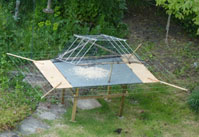
One positive output of this study is therefore confirmation that wearing the tags for long periods of time does not compromise the welfare of the birds.
Retrieving the tags proved more challenging than anticipated due to the arrival of a very determined cat in the neighbourhood, which reduced the frequency with which birds visited ringing site and necessitated a lot of additional work to predator-proof the catching stations. However, between January and June 2016, seven of the returning eight birds were captured and all had retained their tags. Unfortunately, the tags performed less well than expected, but significant amounts of data were retrieved from four of the seven for the period July-September.
Results
The results showed that all four birds had remained in gardens in Holt during late summer/early autumn period, never venturing outside the town boundary. From previous re-sightings, we know that birds frequently travel up to 500m across the town to feed at the ringing site during the breeding season; in contrast, the tags showed that, post-breeding, individuals tended to confine their activities to an area of approximately 100m in diameter, often located some distance (up to 400m) from the ringing site.
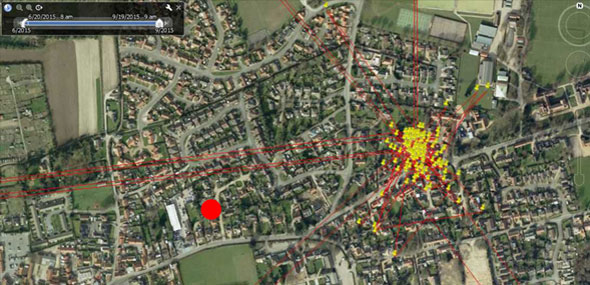
This evidence suggests that the drop in numbers observed in autumn is due to a seasonal reduction in home range, with fewer home ranges therefore overlapping with any individual garden. It is suspected that these sites are actually the breeding locations for the respective birds, but more observational work is required to confirm this. It could be that male Blackbirds are willing to travel further to visit gardens in the breeding season, specifically to access readily-available food sources.
Next steps
While a sample size of four is too small to form the sole basis of a published paper, we will write the results up in the form of a BTO research report, which will include standardised measurements of home ranges and maps showing their size and position. The information collected constitutes a robust pilot study, clearly demonstrating that this methodology has the potential to answer the questions posed.
We are currently liaising with the tag developer/supplier to identify the source of the technical problems; once these issues have been resolved, the intention is to seek funding to tag a further 20 males during the post-breeding season and 20 males during the breeding season, allowing us to compare home range sizes at different stages of the breeding cycle.
Thank you for your support
We are very grateful for the support Ark Wildlife has given to this project, which is really pushing the boundaries of the species it is possible to track with the latest GPS technology. The results of this study will hopefully help us, in time, to extend the permissions currently available to smaller birds species and for longer periods of time. We look forward to sending you the BTO research report with the results together with the full set of maps documenting the movements of the tagged Blackbirds in this innovative pilot study.







